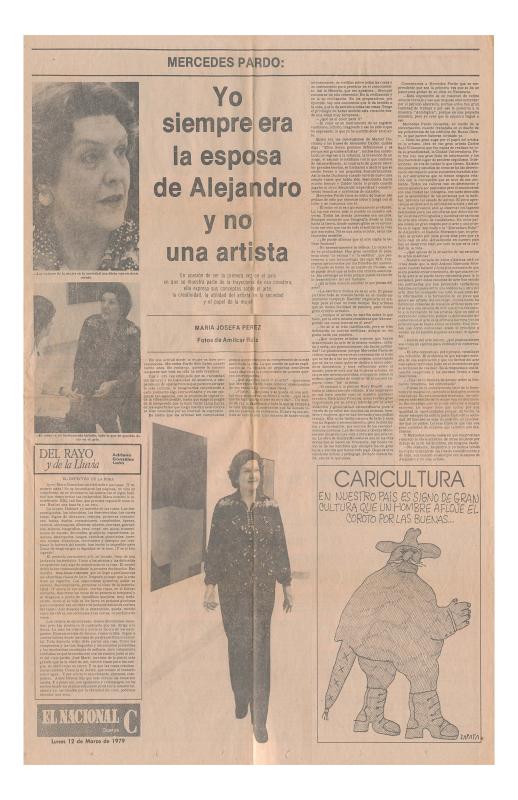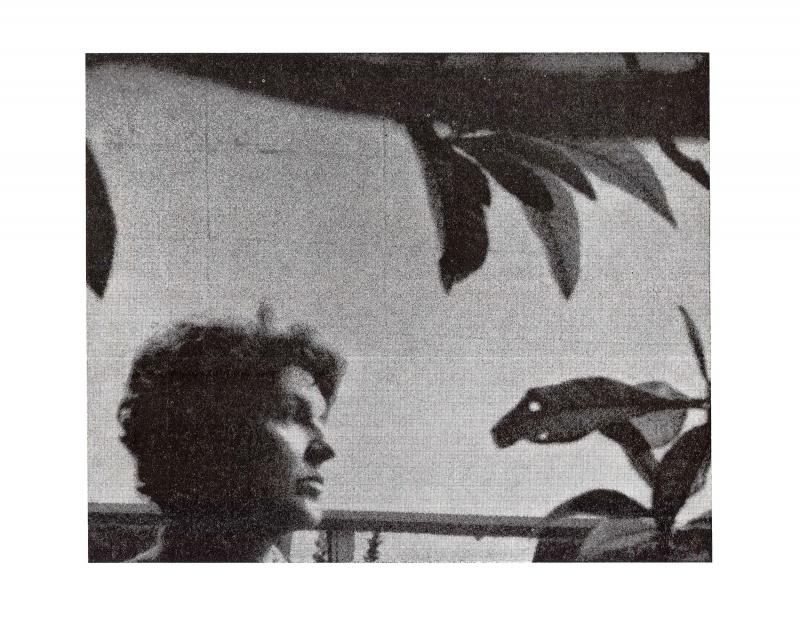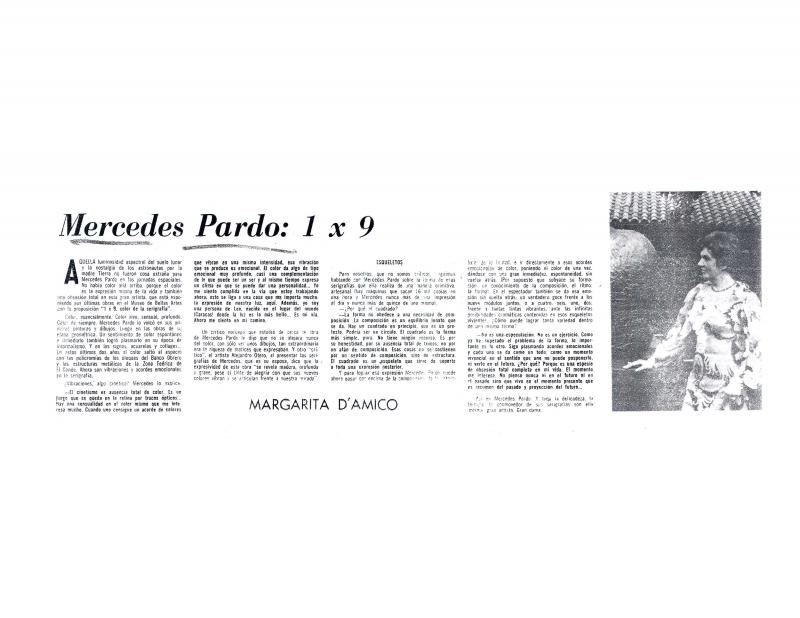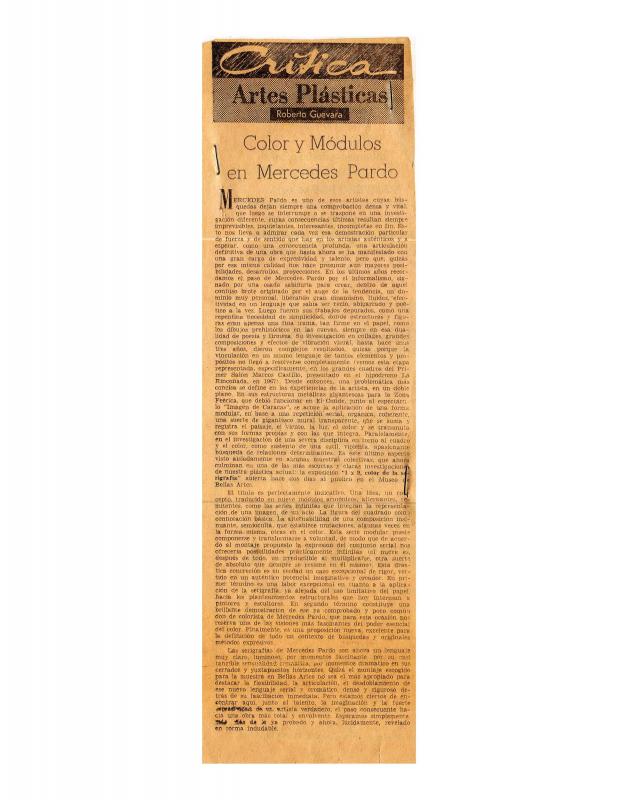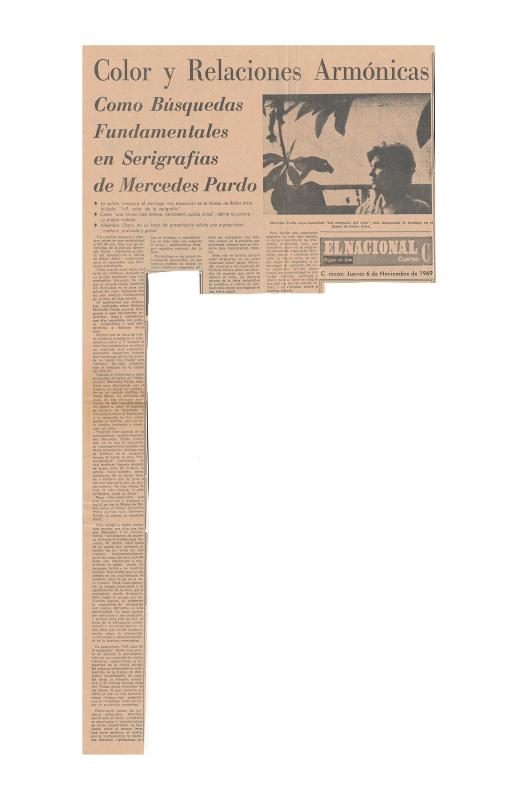The Venezuelan sculptor and art critic Ángel Ramos Giugni (1934–1992) writes this article for the art and cultural journal Imagen, founded in 1967 by the Instituto Nacional de Cultura y Bellas Artes. He focuses on a display of Mercedes Pardo’s (1921–2005) silkscreens at the Museo de Bellas Artes in Caracas. While the title of the exhibition is not mentioned, the author’s analysis of the works on Formica, the photograph that accompanies the article, and the date of the text clarify that the reference is to 1x9 serigrafia del color, which opened on November 9, 1969.
The premise of the text reads as an open critique to the Venezuelan art system. It claims that only a few artists have escaped negative critique and they are expected to produce artworks in trends and rhythms imposed by the marketplace. Although with no mention or interview at stake, Ramos Giugni’s remarks are a recurring theme in Pardo’s encounters with the press where she often disclosed her concerns for the art market’s expectation, a fast and prolific production, as well as the commodification of art itself [consult in this regard the ICAA Digital Archive (doc. no. 1331363)]. Despite expectations as such, Pardo always maintained a lengthy creative process that included several preparatory stages. An artist himself, Ramos Giugni praises Pardo’s serigraphical technique and highlights the chromatic approach as seminal in her work. These comments were at the core of Alejandro Otero’s text that accompanied her exhibition, where he argued that Pardo’s invention (of harmonious relations between colors and forms) entails her unique contribution to this medium. Although the focus of this text (and exhibition) is on silkscreens, Pardo’s miscellaneous production includes large-scale public works, theatrical set designs, oils and acrylics on paper and canvas, collages, and stained glass. Experimentations of this kind have been frequently discussed in her literature as different ways to express color, the core element of her art production.
For the exhibition catalogue text that accompanied the exhibition, see Alejandro Otero, “Mercedes Pardo: color de la serigrafía” (doc. no. 1143176). For further reading on this exhibition, see Margarita D’Amico, “Mercedes Pardo: 1 x 9” (doc. no. 1155959); Roberto Guevara, “Color y módulos en Mercedes Pardo” (doc. no. 1155991); and anonymous, “Color y relaciones armónicas como búsquedas fundamentales en serigrafías de Mercedes Pardo” (doc. no. 1325234).

